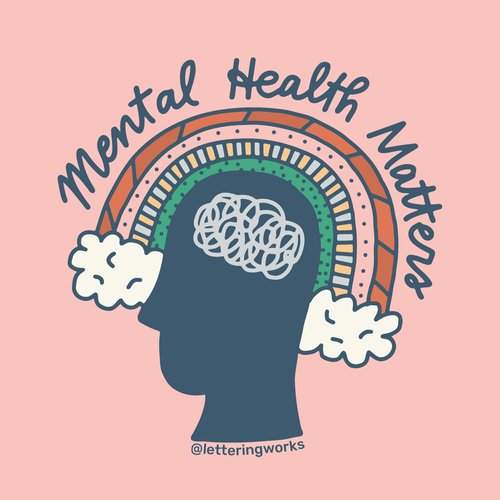Protecting Our Future: Why Investing In Childhood Mental Health Matters

Table of Contents
The Rising Prevalence of Childhood Mental Health Issues
Understanding the Statistics
The rates of anxiety, depression, and other mental health disorders in children and adolescents are alarmingly high and steadily increasing. The consequences of ignoring this trend are far-reaching.
- Anxiety Disorders: According to the Anxiety & Depression Association of America, anxiety disorders affect approximately 8% of children aged 3-17.
- Depression: The Centers for Disease Control and Prevention (CDC) reports a significant increase in adolescent suicide rates, often linked to undiagnosed and untreated depression.
- ADHD: Attention-Deficit/Hyperactivity Disorder (ADHD) affects millions of children, impacting their academic performance and social interactions.
- Other Disorders: Many other childhood mental health challenges, including eating disorders, trauma-related disorders, and autism spectrum disorder, also demand attention and resources.
Several factors contribute to this rise, including increased academic pressure, social media's impact on self-esteem, and the pervasive effects of societal stress on families.
The Long-Term Consequences of Untreated Mental Health Problems
Untreated childhood mental health issues can have devastating long-term consequences. These problems often persist into adulthood, significantly impacting various aspects of life.
- Relationship Difficulties: Childhood trauma and untreated mental health conditions can lead to difficulties forming and maintaining healthy relationships.
- Educational Challenges: Mental health problems can hinder academic success, leading to lower educational attainment and limited career opportunities.
- Employment Issues: Adults struggling with untreated mental health issues from childhood often face challenges in the workforce, including reduced productivity and increased absenteeism.
- Substance Abuse: Untreated mental health conditions significantly increase the risk of substance abuse and addiction later in life.
- Increased Healthcare Costs: The long-term costs associated with treating untreated mental health issues far outweigh the investment in early intervention.
The Economic Benefits of Investing in Childhood Mental Health
Early Intervention Saves Money
Early identification and intervention are significantly more cost-effective than addressing mental health problems later in life. Proactive measures can prevent the escalation of issues and minimize the need for expensive long-term care.
- School-Based Programs: Implementing comprehensive mental health programs in schools can provide early identification and support, reducing the need for more intensive interventions later.
- Community Support: Investing in community-based mental health services provides accessible and affordable care for children and families.
- Return on Investment: Research shows that early intervention programs offer a substantial return on investment, reducing healthcare costs and boosting productivity in the long run.
A Stronger Workforce and Society
Investing in children's mental health isn't just about individual well-being; it's about creating a healthier, more productive workforce and society.
- Improved Academic Performance: Children who receive appropriate mental health support perform better academically, leading to increased educational attainment and higher earning potential.
- Reduced Crime Rates: Addressing mental health challenges early can contribute to reduced crime rates and improved public safety.
- Increased Overall Well-being: A society that prioritizes childhood mental health experiences a higher level of overall well-being, leading to a stronger social fabric and economic prosperity.
Practical Steps to Improve Childhood Mental Health
Raising Awareness and Reducing Stigma
Open conversations about mental health are essential to reduce the stigma associated with seeking help. Education and awareness campaigns can empower children, parents, teachers, and communities to address mental health concerns proactively.
- Educating Parents and Teachers: Providing training and resources to parents and teachers enables early identification of mental health issues and effective responses.
- Promoting Support Networks: Creating accessible and supportive networks for children and families facing mental health challenges can reduce isolation and increase access to help.
Access to Affordable and Quality Mental Healthcare
Ensuring access to affordable and high-quality mental healthcare for children is paramount. This includes expanding access to qualified professionals and implementing policies that support mental health services.
- Policy Changes: Advocating for policy changes that increase funding for children's mental health services is crucial.
- Community Initiatives: Community-based initiatives can play a vital role in providing accessible and affordable mental healthcare to children and families.
- Early Identification and Timely Intervention: Early identification and prompt intervention are critical for effective treatment and improved outcomes.
Conclusion
Investing in childhood mental health is not merely a social responsibility; it's an economic imperative. By addressing the rising prevalence of mental health challenges in children, providing access to quality care, and reducing the stigma surrounding mental illness, we can build a stronger, healthier, and more prosperous future. We must prioritize early intervention strategies and advocate for policies that support the mental well-being of our children. Invest in our children's future by supporting initiatives focused on childhood mental health. Protecting our future starts with prioritizing childhood mental health services and fostering a supportive environment where every child can thrive. Let's work together to create a world where all children have the opportunity to reach their full potential, free from the burden of untreated mental health issues.

Featured Posts
-
 Understanding This Country People Places And Perspectives
May 02, 2025
Understanding This Country People Places And Perspectives
May 02, 2025 -
 Nebraskas Voter Id Campaign A National Award Winner
May 02, 2025
Nebraskas Voter Id Campaign A National Award Winner
May 02, 2025 -
 Register For Sonys New Play Station Beta Program
May 02, 2025
Register For Sonys New Play Station Beta Program
May 02, 2025 -
 Find Newsround On Bbc Two Hd A Simple Tv Guide
May 02, 2025
Find Newsround On Bbc Two Hd A Simple Tv Guide
May 02, 2025 -
 Ghanas Psychiatric Shortage Implications For Mental Healthcare Access
May 02, 2025
Ghanas Psychiatric Shortage Implications For Mental Healthcare Access
May 02, 2025
